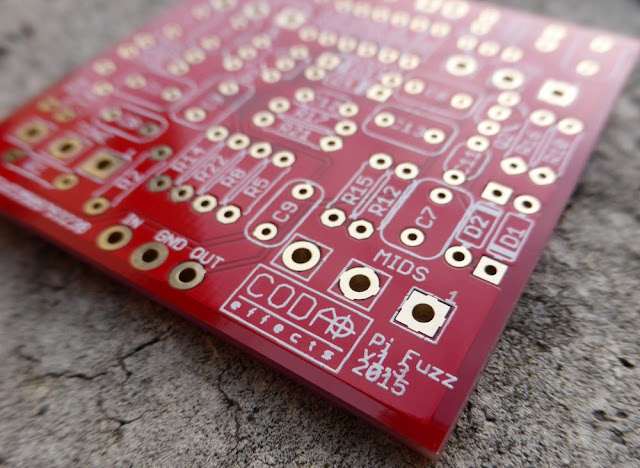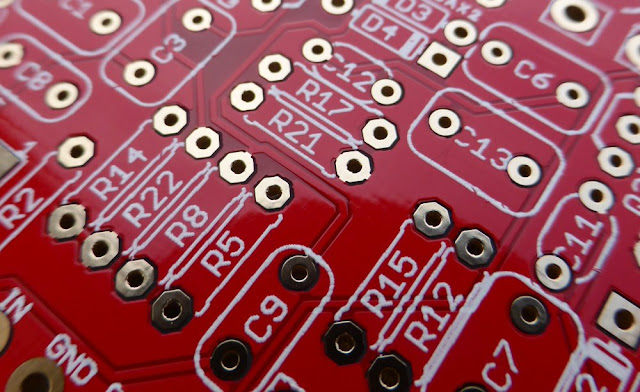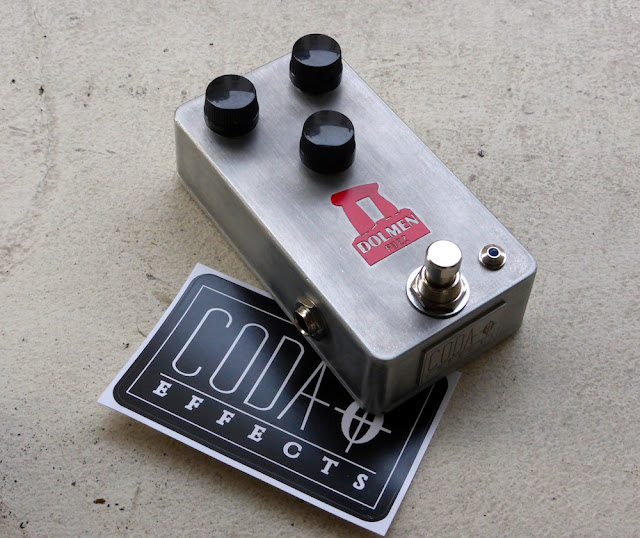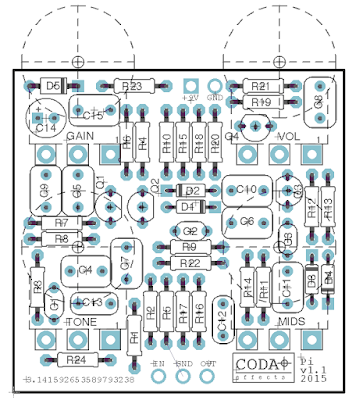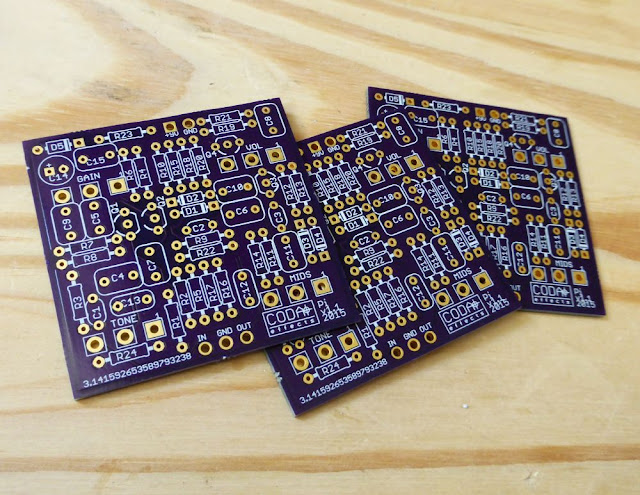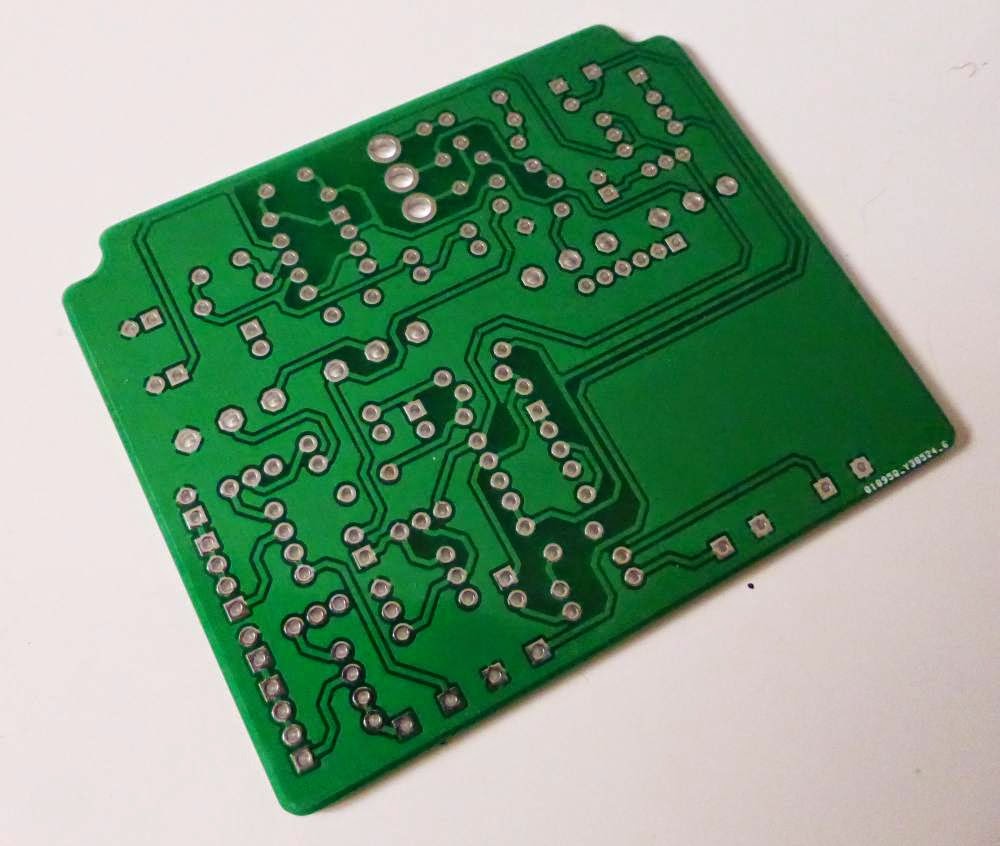Here is my new Big Muff PCB!
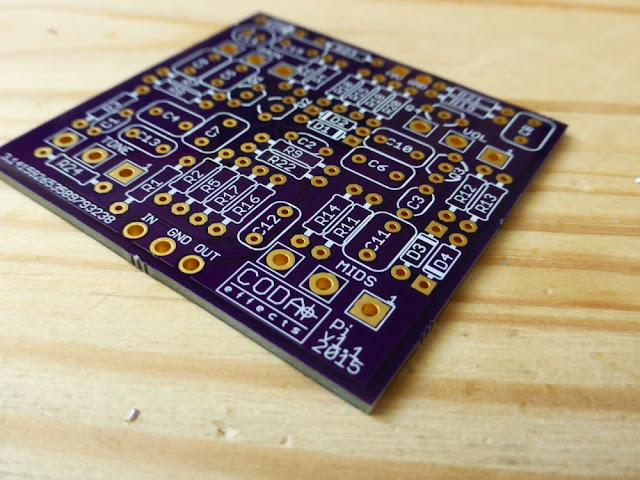
Remember when I was telling you about
PCB development? (yes, long time ago...) I finally finished one! It took me a lot of time, but now I am satisfied with my layout:
As some of you recognized,
this is a Big Muff circuit! I decided to add an optional forth knob: the mid knob. I can decide whether I want to add it or not, simply by adding a jumper if not (and then, the tone potentiometer can be wired in the center of the pedal). Maybe I will add another optional feedback mod, allowing to connect Q1 emitter to Q3 emitter via a switch. It creates a nice noisy feedback, ideal for sound experimentations...
The circuit is exactly the same as a classical Big Muff, I just added the mid knob in the tone stack, and some components for
polarity protection and voltage stabilization. (on the top-left part of the PCB) I will rename the components so their number will be the same as the one used on the
Big Muff Page, so you can easily make any version of the Big Muff you like, or modify it with their great
circuit guide.
Capacitors sizes were chosen bigger than needed, so they can be swapped with other value to fit any Big Muff model (Russian, Ram's Head, ...etc). Note the funky logo I made because OshPark is not able to use imported images... Anyway, it is still nice!
I receive the first batch of prototypes:
It is a very compact build! It can fit a 1590B enclosure (well, I hope so...), or at least a 125B with top mounted jack. For now, I ordered a test batch of 3 PCB in oshpark, and I plan to test it as soon as possible! If it works correctly, I think I will produce a small serie of PCB.
As you may know, PCB are cheaper if ordered in large quantities. If you are interested in buying one PCB (or more!), send me an email, so I can adjust the number of PCB I will order! Price will be around 5-8 euros for the first batch (depending on the number of people interested), with a 1 euro shipping cost for France, and 3 euros abroad.
I first designed this PCB for personal use, but it can be a win-win situation if people are interested.
For now, I am thinking about the logo I will use, I thought of this:
I noticed that the "Pi" symbol, looked like a lot a Dolmen... Which is also convenient for a Fuzz that has been used by many stoner guitarists, including ones disguised as druids (Sunn o))), anyone ?). Maybe I will have it laser cutted in black or red (maybe purple for a "violet era" rams head), in order to have 2/3 different version. A bare aluminium version with the red logo that will be the "vintage correct" version, following a classic 73 ram's head fuzz schematic, and a black logo on a black or dark green (russian) box for a "doomy" version, very bassy and gainy.
Let me know what you think about it, post a comment!








